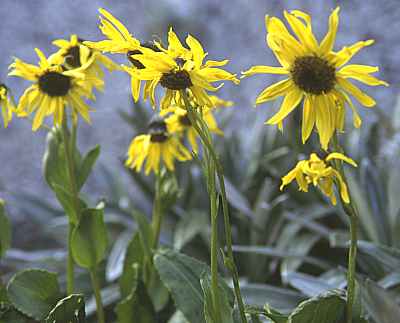 |
Plant Portrait : Cremanthodium ellisii |
| Home Recommend This Site To A Friend |
|
by Fred Carrie
According to Polunin, C ellisii has a wide distribution from Kashmir to SE Tibet. I have personally seen it growing in Central Nepal on cliff ledges, at the base of rocks and on east facing slopes at about 4500m. The plants on the open slopes formed large colonies while the cliff dwellers were mainly solitary. It is certain that these plants have a good supply of water during the growing season due to the monsoon, do not suffer baking hot temperatures at any time and are protected by snow cover during the worst of the winter weather. All this gives a good indication of its cultural needs Although it should be noted that we have never found winter protection necessary here at Tough in Aberdeenshire. We obtained seed of C&Mc 383 collected at 4050m above the Rohtang Pass in Himachal Pradesh. Not all the seed was viable but a reasonable number germinated and were pricked out into 7cm plastic pots. After a short growing period of about two months, and in mid-summer, the seedlings disappeared and at first sight appeared to have damped off This was not, however the case. Next spring they re-appeared and grew on quickly. We have had a similar experience with C arnicoides and wonder how many pots of these seedlings are thrown out, believed dead when in fact they are simply dormant. It could be that this early dormancy is brought about by overly dry conditions but this has not been proven. We have seen the same sort of behaviour with Dodecatheon. We kept the plants in their pots until August 1993 ( mainly because I forget to plant them out before then) and then found a space for a group of them in a bed beside our house which is sheltered from the south by a north-facing gable end and from the west by high shrubs. The soil here is acid, fairly heavy and moisture retentive but the bed is raised and well drained. It only gets sun in the early evening and is a very cold spot in the garden all year round. The plants flowered for the first time in June 1994 with only one or two blooms but in July 1995 they flowered again, producing a wealth of nodding blooms on stems of about 25 cm and setting a great deal of seed. The main requirements of this species would appear to be a very cool moist spot that never dries out nor becomes saturated in winter, some protection from slugs which relish the new foliage and a good deal of patience on the part of the grower who will, in the end, be rewarded by this unusual and very attractive plant. ^ back to the top ^ |
